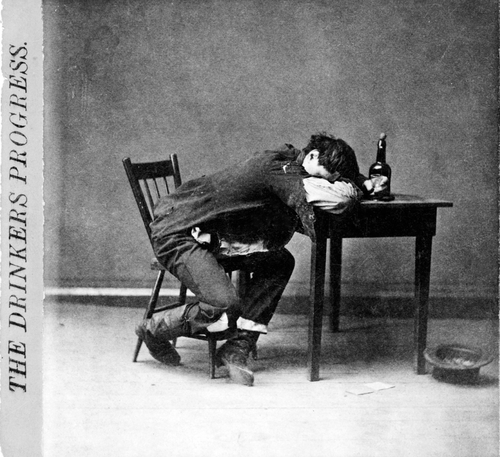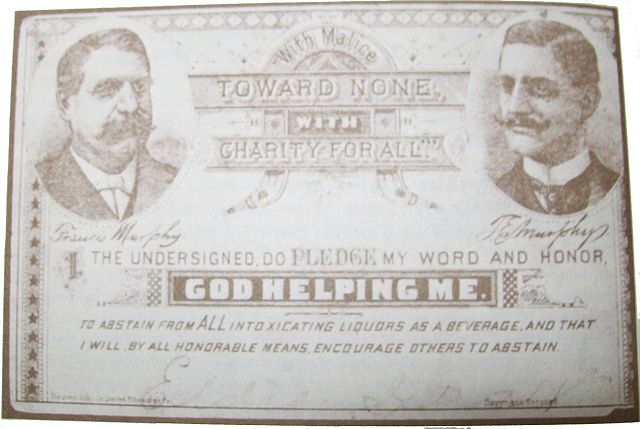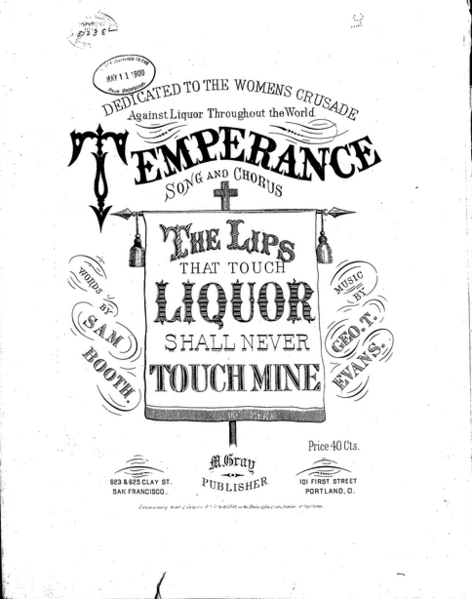The Temperance Movement, a prominent social and political force in the 19th and early 20th centuries, aimed to reshape the drinking habits of individuals and entire nations.
Originating in the United States and spreading worldwide, this movement sought to curb or eliminate alcohol consumption through a variety of strategies, including pledges, literature, and even legislation.
In this article, we delve into the fascinating history of the Temperance Movement, exploring its origins, goals, and significant achievements.
From the adoption of temperate drinking to the enactment of prohibition laws, we uncover the lasting legacy of this influential movement and its enduring impact on alcohol regulation and societal attitudes.
Temperance Movement Facts
1. Originated in the United States in the early 19th century
The Temperance Movement can trace its roots to the United States, where it began to gain momentum in the early 19th century.
It was driven by concerns about the social and moral impact of excessive alcohol consumption, which was widespread at the time. The movement emerged as a response to the perceived negative consequences of alcohol on individuals and society.

2. Aimed to reduce or eliminate alcohol consumption
The primary objective of the Temperance Movement was to curb or entirely eliminate the consumption of alcoholic beverages.
Also Read: Temperance Movement Timeline
This goal was motivated by the belief that alcohol abuse was responsible for a range of societal problems, including family violence, poverty, and crime. Different factions within the movement had varying approaches to achieving this goal.
Some advocated for moderation, encouraging individuals to limit their alcohol intake, while others promoted complete abstinence, urging people to abstain from alcohol entirely.
3. Promoted temperate drinking or complete abstinence
The Temperance Movement offered individuals a choice in how they engaged with alcohol. It encouraged temperate drinking as a responsible and moderate approach to alcohol consumption.
This meant consuming alcoholic beverages in a controlled and moderate manner, avoiding excessive drinking that could lead to intoxication and its associated problems. Additionally, another significant facet of the movement was the promotion of complete abstinence from alcohol.
Many Temperance societies and organizations, such as the American Temperance Society, required members to take pledges in which they vowed to abstain from drinking alcohol entirely.
These pledges were often public commitments, displayed as certificates or badges, and symbolized a person’s dedication to a life without alcohol.
4. Utilized temperance pledges and badges
One distinctive feature of the Temperance Movement was the use of temperance pledges and badges. To demonstrate their commitment to temperance or abstinence, individuals would take a formal pledge, often in front of witnesses or within a community setting.
These pledges were essentially promises to refrain from drinking alcoholic beverages. Participants would receive a badge or certificate as a visible symbol of their commitment.
Wearing these badges or displaying certificates served as a reminder to individuals and their communities of their dedication to the cause. These public displays helped create a sense of unity and solidarity among those involved in the movement.

5. Involved significant participation of women
Women played a pivotal role in the Temperance Movement. Many women were active and prominent members of various temperance societies and organizations. They were motivated by concerns about the destructive effects of alcohol on their families and communities.
Women’s involvement in the movement gave them a platform to advocate for social reform and gave rise to a strong network of female activists.
Women-led organizations, such as the Women’s Christian Temperance Union (WCTU), were instrumental in advancing the cause of temperance and played a key role in achieving political successes, including the prohibition of alcohol in many places.
6. Led to the enactment of prohibition laws
The Temperance Movement achieved significant political success in various countries, most notably in the United States. In the U.S., the culmination of the movement’s efforts was the passage of the 18th Amendment to the Constitution, which came into effect in 1920.
This amendment prohibited the manufacture, sale, and transportation of alcoholic beverages throughout the country. This period, known as Prohibition, lasted until 1933 when the 21st Amendment repealed the 18th Amendment.
Prohibition represented the ultimate victory for the Temperance Movement, as it temporarily eliminated legal access to alcohol, although it also led to the rise of illegal alcohol production and distribution.
7. Had a popular anthem called “The Temperance Song”
“The Temperance Song” was a well-known anthem of the Temperance Movement. It was a catchy and uplifting song that aimed to promote the virtues of sobriety and temperance.
The song’s lyrics emphasized the benefits of abstaining from alcohol and often served as a motivational and inspirational piece for members of the movement. Music played a significant role in conveying the message of the Temperance Movement and rallying its supporters.

8. Produced a lot of educational literature
The Temperance Movement generated a substantial amount of educational literature. Pamphlets, books, newspapers, and other printed materials were used to inform the public about the perceived dangers of alcohol abuse and the benefits of temperance.
These publications often contained statistics, personal stories, and moral arguments against drinking alcohol excessively. Educational efforts were a key strategy in the movement’s campaign to change societal attitudes toward alcohol.
9. Had international influence in various countries
The Temperance Movement was not limited to the United States but had a global impact. Similar movements emerged in various countries, including Canada, Australia, the United Kingdom, and Sweden, among others.
While each movement had its unique characteristics, they shared common goals and strategies in advocating for temperance or abstinence. The international influence of the Temperance Movement contributed to a broader conversation about alcohol and its consequences on a global scale.
10. Declined in popularity after the repeal of Prohibition in 1933
The peak of the Temperance Movement’s influence in the United States coincided with the era of Prohibition, which began with the enactment of the 18th Amendment in 1920.
However, Prohibition was met with numerous challenges, including illegal alcohol production and distribution, known as bootlegging.
The negative consequences of Prohibition, such as the growth of organized crime, led to a decline in its popularity. In 1933, the 21st Amendment was ratified, repealing the 18th Amendment and effectively ending national Prohibition.
This marked the end of the Prohibition era and a decline in the influence of the Temperance Movement, although its impact on alcohol regulation and attitudes persisted.
